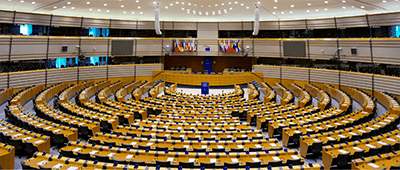How the State Government Works: CBSE Class 7 Civics Worksheet PDF
FAQs on How the State Government Works: CBSE Class 7 Civics Worksheet PDF
1. What is a constituency, and who is an MLA? This is an important one-mark question for the exam.
A constituency is a specific geographical area from which all the voters living there choose one representative for the state's legislative body. The representative elected from that constituency is known as a Member of the Legislative Assembly (MLA). Each state is divided into numerous constituencies for election purposes.
2. How is the government formed in a state after elections? Explain the process in three steps.
The formation of a state government is a key process asked in exams. Here are the steps:
- First, the political party whose MLAs win more than half the total number of constituencies in a state is declared to have a majority.
- The Governor of the state then invites the leader of this majority party to form the government. This party is now the 'ruling party'.
- The elected leader becomes the Chief Minister, who then selects other MLAs to be ministers. The Governor officially appoints the Chief Minister and the other ministers.
3. Differentiate between the ruling party and the opposition. Why is the opposition considered important for a democracy?
The ruling party is the political party that secures a majority in the elections and forms the government. All other elected members (MLAs) who do not belong to the ruling party collectively form the opposition. The opposition is crucial because it acts as a watchdog, questioning the government's decisions, highlighting important issues, and ensuring the government remains accountable to the people.
4. What is the Legislative Assembly, and what are its main functions?
The Legislative Assembly is the place where all MLAs, from both the ruling party and the opposition, meet to discuss various matters concerning the state. Its main functions, which are frequently asked in exams, include:
- Making and passing new laws for the state.
- Debating public issues and government policies.
- Approving the state's budget and authorising government expenditure.
- Holding the Council of Ministers accountable for their work.
5. Explain the dual responsibility held by an MLA who is also appointed as a minister.
This is a higher-order thinking question. An MLA who becomes a minister has two distinct roles:
- As an MLA: They are responsible for representing the people of their own constituency, raising their specific problems and needs in the assembly.
- As a Minister: They are in charge of a specific government department (e.g., Health, Education, Finance) and are responsible for making and implementing decisions that affect the entire state, not just their constituency. They must effectively balance both these roles.
6. What is the role of the Governor in the functioning of a state government?
The Governor is the constitutional head of a state, appointed by the President of India. While the real executive power lies with the Chief Minister, the Governor has several important functions:
- Appointing the Chief Minister and the Council of Ministers after an election.
- Ensuring that the state government works according to the Constitution.
- Giving assent to bills passed by the Legislative Assembly, without which a bill cannot become a law.
7. How does a debate in the Legislative Assembly help in making better laws for the people?
A debate in the Legislative Assembly ensures that a proposed law is thoroughly examined from all angles. MLAs from the opposition can point out potential flaws, question the government's intentions, and suggest improvements. This process of open discussion and criticism helps in refining the law, ensuring it is fair, practical, and truly beneficial for the citizens of the state before it is passed.
8. Beyond voting, what are some ways citizens can influence the decisions of the state government?
Citizen participation is not limited to voting. As per the CBSE syllabus for 2025-26, students should know that citizens can influence the government by:
- Using the media (TV, newspapers) to discuss and critique government actions.
- Organising public meetings, rallies, or signature campaigns.
- Holding press conferences where ministers are made to answer questions from journalists representing the public.
- Writing to their local MLA to raise concerns about specific issues.
9. From an exam perspective, what are the three main levels at which government works in India?
For Class 7 Civics, it's important to understand the three levels of government:
- National Level: The central government, which deals with matters of national importance.
- State Level: The government that manages the affairs of an individual state, as discussed in this chapter.
- Local Level: The government at the village, town, or city level (e.g., Panchayats and Municipalities).
10. How does the work of government departments, like the Health Department, directly impact the public?
The work of government departments has a direct impact on citizens' daily lives. For example, the Health Department, led by the Health Minister, is responsible for providing healthcare services. It takes action by organising medical camps, launching awareness campaigns about diseases like diarrhoea, ensuring clean drinking water, and managing public hospitals. The effectiveness of these actions, often discussed in press conferences and the assembly, determines the well-being of the people in the state.

















